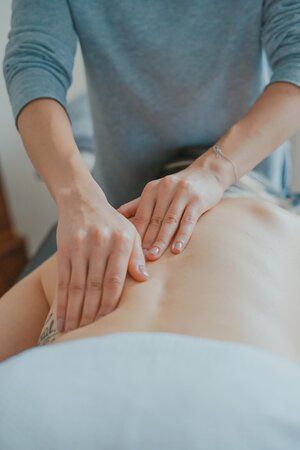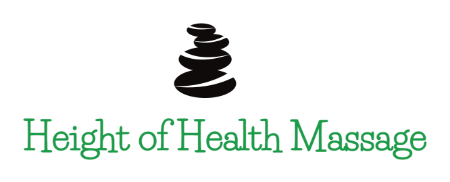Learn more about those pesky, painful “knots” under your skin.

Muscle "Knots"
Muscle "Knots"
It’s been a long day at the office, you reach your hand to the back of your neck and to the top of your back. It’s sore, achy, and there’s a -- knot? Maybe it feels like a rock under your skin, maybe a lentil, maybe a golf ball. Regardless, it doesn’t seem like it should be there and you may even identify it as the primary source of your pain or discomfort. So, what is it?
Full disclosure: the origin of muscle knots is a highly speculated topic in the physio world. It is possible you’ve heard different explanations from different types of practitioners. A "muscle knot" is better known as a myofascial trigger point or TrPs, but no - there is not an actual knot in there. According to many kinesiology professionals and researchers, myofascial trigger points are a small area of contracted muscle fibers within a larger bundle of muscle tissue (Ingraham, 2020). This area of contracted muscle tissue can cause restriction to the local blood supply which makes it harder for the tissue to get the nutrients it needs for efficient healing. TrPs can potentially pull on surrounding tissue, which is why sometimes when your massage therapist presses on one spot you may feel referring pain to another area. For example, people with tension headaches may feel referring sensations into the head when certain areas of the neck are pressed acting as a quick way to "activate" the headache. These pesky little bundles of tissue can also impact nerve functioning over time. There is a general consensus that TrPs occur when muscle tissue has sustained overload or trauma through occupational, recreational, or sports related physical activity, or from postural deviations (Bron & Dommerholt, 2012).
How do we treat them?
With all of the unknowns of TrPs, there is not a whole lot of consensus for treating them. Every body is different, and "knots" manifest uniquely from one person to the next. And while this is a massage therapy blog, I'll be completely honest with you: there is not a lot of evidence for what actually nips those little muscle nuggets in the bud [from a scientific/research perspective]. So what the heck should you do about them?
Massage is a really good place to start! Here are a few massage therapy modalities to consider:
Trigger Point Therapy (TPT) is a method that is widely used among massage therapists, physical therapists, chiropractors, and other practitioners who help people manage muscular and myofascial well-being. TPT involves applying direct pressure to the painful, “knotted” up area until there is a change recognized by the client. This change can feel as if you went from a 9 to a 4 on a subjective pain scale, or there may be a sense that the tension within is “dissolving."
Myofascial Release Therapy (MFRT) is used to manipulate muscle and fascial tissue below the epidermis. A person should have pliable skin that can be pulled and manipulated fairly easily. When the tissue is taut and seemingly "stuck" or "glued down," this is a good indicator that MFRT would be beneficial. MFRT includes using techniques like rolling the skin, stretching the tissue in opposing directions, and holding one area while stretching another to tackle the problem more broadly.
Deep tissue massage can be used to address myofascial trigger points as well. Using deep tissue in combination with TPT and MFRT can help to address the TrPs directly, broadly, and deeply.
Other options for treating muscle knots include: physical therapy, dry needling, improving ergonmics and posture, stretching, cupping, hot and cold therapy, and more. You will need to find the treatment that works best for your knotty self, but massage therapy is an excellent place to start!
Summary
A muscle knot is a pesky area of contracted muscle fibers that can cause mild to severe pain and discomfort. They can refer pain to different areas of the body, be the culprit of your headaches, and keep you from doing activities you enjoy. Various modalities of massage therapy can help to work out these myofascial trigger points. The next time you feel pain after a long day at work, or a good workout consider that you may have developed a myofascial trigger point, and we can help you with that! If you think you have a myofascial trigger point, let your massage therapist know so they can best adapt your session to address this issue.
For a more thorough report on the science of muscle knots click here.Check out this video by SciShow to learn more:
